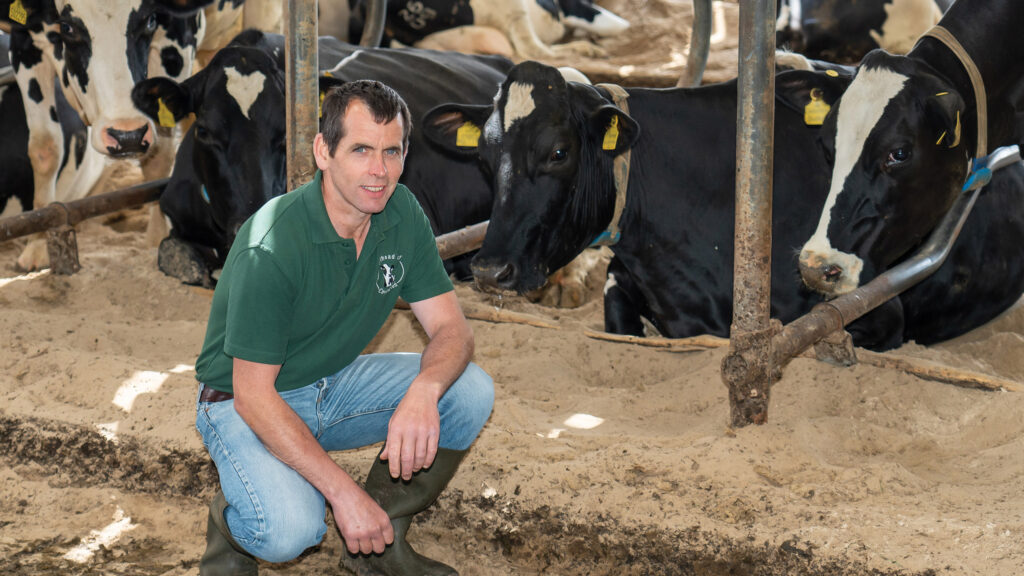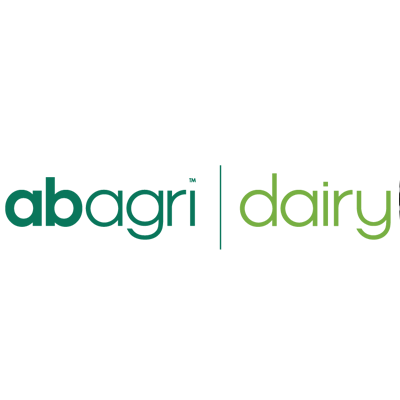How separate milking groups helped parlour efficiency
 William Baillie © Angus Findlay
William Baillie © Angus Findlay
Getting more heifers to calve down for a second lactation and improving milking parlour efficiency are the result of William Baillie’s herd group dynamics at Hillhead Farm, Biggar, Lanarkshire.
Making best use of old and new housing led him to devise four milking groups for the 400-cow herd: fresh cows, first-lactation heifers, the main milking herd and fast cows.
See also: Why two systems are running separate heifer milking groups
Having visited other dairy farms that had had success with separate first-lactation groups, William, who is FW’s 2023 Dairy Farmer of the Year, created a heifer group about four years ago, using 65 sand-bedded cubicles for 60 head.
“We shortened the beds and lowered the head rail so that when they stand, their back end is over the passage.
“This keeps beds clean,” he says. He saw a 10% increase in milk yield the first year, and fewer heifers were culled in their first lactation because of poor fertility.
William thinks the lack of bullying from mature cows gives heifers more confidence and they are more likely to express heats. Last year, 94% of heifers calved down for a second time.
Farm facts
Hillhead Farm, Biggar, Lanarkshire
- 156ha owned; 81ha rented; separate heifer farm
- 400 cows fully housed
- Milks three times a day
- 11,452kg at 4.07% butterfat and 3.39% protein
- Zero grazing April to November
- High-fibre, low-potassium dry cow silage
- One total mixed ration to milking cows
- Sells to Yew Tree Dairies on solids contract
- Pasteurised milk sold through vending machines and cafés
Flexible groupings
Heifers spend their first three weeks in the fresh-cow group, learning the milking routine before moving into the heifer shed.
They stay there until back in-calf – on average, about 150 days. Ideally, William would manage them separately for their whole lactation, but grouping has to be flexible and depends on the number of heifers calving.
A well-grown, in-calf heifer, 100 days in milk would move into the main cow group, while a smaller heifer might stay for 200 days, he explains.
Milking heifers are fed the same diet as cows, with no need for “extras”, he says: “Adults would be eating 22.5-23kg dry matter/day, whereas heifer intakes would be 95% of this.”
Heifers are the second group to be milked, following fresh cows, on the basis that newly calved cows are the most vulnerable and clear of contagious mastitis after their dry period.
“Heifers, in theory, are less likely to have any form of infection and we milk them when the parlour is ‘clean’,” he adds.
Heifers average 10,000kg in their first lactation and really motor on in their second, says William.
“We are not pushing them: our focus is on long-term production and getting them back in-calf. I would definitely recommend it.”
Quick cows
He uses parlour software to identify and group those cows milking out in four minutes or less.
They are low-yielding, in-calf cows producing 25-40 litres/day and are the last to be milked.
“We have a 24/24 rapid-exit parlour, and I heard an American farmer talk about milking 1,100 cows through this exact same parlour.
He had grouped his herd according to speed and increased throughput by 25%,” he says.
Each milking takes three-and-a-half hours and has one operator in the pit, with a second split between milking and moving cows.
By the last cow group, both workers are mostly milking, rather than having to wait for slow cows.
“Now, all cows are close together in milking time. If you put units on in order, they come back off in the same order and the milkers can spray teats without moving back and forth up the row. We are so much more efficient – easily 20% – and it speeds up milking. Everyone likes it.”
Enter the 2024 Farmers Weekly Awards
Farmers Weekly 2024 D Farmer of the Year is sponsored by AB Dairy UK. Enter yourself or nominate someone now.
